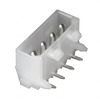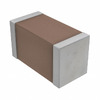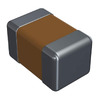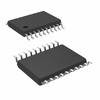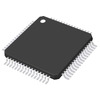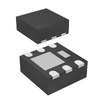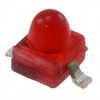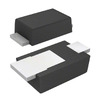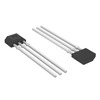TIP2955 Transistor: Pinout, Equivalents, and Datasheet
The TIP2955 is a powerful and reliable PNP transistor used in many types of electronic circuits. It plays a role in devices that include semiconductors, capacitors, resistors, and integrated circuits. In this article, we’ll explore the TIP2955’s main features, how it works, and why it's so useful in boosting the performance of different electronic systems.Catalog
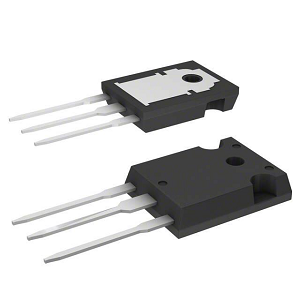
What is the TIP2955?
The TIP2955 is a silicon epitaxial-base PNP transistor housed in a TO-218 package. Its robust design offers a versatile solution across multiple high-power applications, seamlessly fitting into power-switching circuits, regulation systems, and audio amplification settings. In power-switching circuits, the TIP2955 excels by efficiently handling current loads in settings with ever-changing demands where steady power regulation supports system efficacy. The TIP2955 serves an important function in regulation systems, adept at preserving steady output as input conditions fluctuate. Its strength in withstanding thermal variations provides dependable control in voltage or current regulators, contributing to systems that endure the test of time and operational pressures. The capacity of the TIP2955 to enhance audio amplification circuits is shown in its delivery of sound with high fidelity, skillfully minimizing signal distortion.
TIP2955 Pin Configuration

|
Pin Number |
Pin Type |
Description |
| 3 |
Emitter |
The emitter is for an outward flow of current. |
| 1 |
Base |
The base manages the biasing of the transistor and
controls the transistor's state. |
| 2 |
Collector |
The collector allows for the inward movement of current
and is connected to the load. |
TIP2955 Symbol, Footprint, and CAD Model


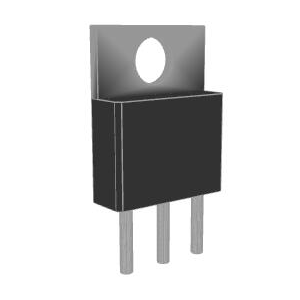
Features of TIP2955
Low Collector-Emitter Saturation Voltage
The TIP2955 is characterized by its notably low collector-emitter saturation voltage. This property enhances the device's versatility, opening doors to efficient circuit designs.
Complementary Pairing with NPN Transistors
Its ability to pair seamlessly with NPN transistors is a highlight, paving the way for integration into dual-transistor circuits.
Applications in Circuitry
These aspects make the TIP2955 a suitable choice for audio amplifiers and power supply circuits. In such applications, achieving precise current flow control becomes a pursuit worth undertaking.
Balanced Performance and Reliability
By using complementary transistors in high-power settings, one can achieve a sense of harmony in performance, reducing issues that arise with mismatched pairs.
Transistor Dynamics
Its adaptation within complex circuits highlights the essence of understanding diverse transistor characteristics and their interplay. This knowledge can be the key to unlocking the full potential in intricate system designs.
Applications of the TIP2955
General-Purpose Circuits
The TIP2955, a multifunctional transistor, operates with exceptional proficiency across a spectrum of general-purpose electronic circuits. Its enduring nature is advantageous in demanding settings where consistent performance over time is favored. In practical situations, its ability to manage high-current loads renders the TIP2955 an asset in promoting circuit stability and efficiency.
Role in Audio Amplifier Systems
High-fidelity audio systems frequently utilize the TIP2955 to achieve signal amplification with accuracy and subtle distortion. The transistor's skill in managing substantial power levels while preserving signal clarity appeals to audiophiles. During the design of speaker systems, optimizing TIP2955 usage can enhance sound quality, resulting in a seamless listening encounter.
Enhancing System Reliability
Beyond its amplification role, the TIP2955 contributes to enhancing system reliability. Its thermal resilience and overheating protections extend device lifespan, thereby decreasing the need for frequent maintenance. In wide-ranging applications, these characteristics are especially valued in systems facing fluctuating power conditions, where reliability during stress is a standard expectation.
Design Considerations for TIP2955
To fully benefit from the TIP2955's capabilities, design considerations require substantial attention. These approaches are guided by iterative improvements from previous projects, where navigating electrical limits and managing heat led to superior circuit optimizations.
Equivalents for TIP2955
• TIP100
• TIP101
• TIP102
• TIP105
• TIP106
• TIP107
• TIP110
• TIP3055
Voltage Regulation Using TIP2955 Transistor

Utilizing three parallel TIP2955 transistors enhances output current. This deliberate configuration improves both current handling and thermal load distribution, extending system efficiency and durability. Those well-versed in this domain often emphasize the importance of proper heat sinking and adequate spacing between transistors to reduce thermal interference and boost overall performance. Achieving a steady voltage output involves pairing the TIP2955 with a 7812 voltage regulator. The 7812 excels in maintaining consistent voltage amidst varying input scenarios, which reduces risks from voltage spikes. Such reliability is use in managing energy in fluctuating environments. Capacitors contribute to a smooth circuit output by minimizing voltage ripple and transient responses, maintaining a stable power supply to devices. Fuses introduce an important layer of protection against excessive current that could threaten circuit components. Choosing the correct fuse rating requires thoughtful analysis, ensuring it surpasses the maximum load current just enough to safeguard without causing undue disruptions.
TIP2955 Technical Specifications
|
Type |
Parameter |
|
Lifecycle Status |
ACTIVE (Last Updated: 7 months ago) |
|
Mount |
Through Hole |
|
Package / Case |
TO-247-3 |
|
Weight |
9.071847g |
|
Collector-Emitter Breakdown Voltage |
60V |
|
hFE Min |
20 |
|
Packaging |
Tube |
|
Part Status |
Active |
|
Number of Terminations |
3 |
|
Terminal Finish |
Tin (Sn) |
|
Max Power Dissipation |
90W |
|
Frequency |
3MHz |
|
Pin Count |
3 |
|
Power Dissipation |
90W |
|
Factory Lead Time |
8 Weeks |
|
Mounting Type |
Through Hole |
|
Number of Pins |
3 |
|
Transistor Element Material |
SILICON |
|
Number of Elements |
1 |
|
Operating Temperature |
150°C TJ |
|
JESD-609 Code |
e3 |
|
Moisture Sensitivity Level (MSL) |
1 (Unlimited) |
|
ECCN Code |
EAR99 |
|
Voltage - Rated DC |
-100V |
|
Current Rating |
-15A |
|
Base Part Number |
TIP2955 |
|
Element Configuration |
Single |
|
Transistor Application |
SWITCHING |
|
Gain Bandwidth Product |
3MHz |
|
Transistor Type |
PNP |
|
Max Collector Current |
15A |
|
Current - Collector Cutoff (Max) |
700μA |
|
Vce Saturation (Max) @ Ib, Ic |
3V @ 3.3A, 10A |
|
Collector Base Voltage (VCBO) |
100V |
|
VCEsat-Max |
3 V |
|
Length |
15.75mm |
|
REACH SVHC |
No SVHC |
|
RoHS Status |
ROHS3 Compliant |
|
Polarity/Channel Type |
PNP |
|
Collector Emitter Voltage (VCEO) |
60V |
|
DC Current Gain (hFE) (Min) @ Ic, Vce |
20 @ 4A 4V |
|
JEDEC-95 Code |
TO-247AD |
|
Transition Frequency |
3MHz |
|
Emitter Base Voltage (VEBO) |
7V |
|
Height |
20.15mm |
|
Width |
5.15mm |
|
Radiation Hardening |
No |
|
Lead Free |
Lead Free |
TIP2955 Transistor Package

TIP2955 Manufacturer Information
STMicroelectronics, an influential entity of semiconductor solutions, takes on the production of the TIP2955. With a wealth of expertise in microelectronics, the company drives forward-thinking advancements that fuel technological evolution. The company focuses on consistently refining and updating their practices to align with industry norms and upcoming trends. Balancing the intricate dynamics between innovation and practicality demands anticipation of market inclinations, a strategy that distinguishes leading companies. In the development of the TIP2955, STMicroelectronics fuses technical with strategic foresight, crafting a product that satisfies contemporary demands while being attuned to future possibilities.
Datasheet PDF
TIP2955 Datasheets:
Mult Dev Adv Material Notice 8/Apr/2019.pdf
About us
ALLELCO LIMITED
Read more
Quick inquiry
Please send an inquiry, we will respond immediately.
Frequently Asked Questions [FAQ]
1. What is TIP2955 & TIP3055 and TO-247?
The TIP2955 and TIP3055 transistors are highly regarded in the electronics domain. Known for their harmonious design and low saturation voltage, they are commonly utilized in audio amplification and power supply domains. These applications thrive on TO-247 technology, which excels due to its remarkable thermal properties and mechanical resilience. These transistors often serve as a great choice in projects where energy efficiency and durability are sought. The robustness of TIP transistors frequently provides a solid foundation for achieving superior thermal characteristics within electronic configurations.
2. What is the power rating of TIP2955 PNP silicon power transformer?
Designed as a PNP complement in the SOT-93 configuration, the TIP2955 transistor boasts a substantial power capacity rated at 90 watts at a typical case temperature of 25°C. This rating highlights its proficiency in maintaining steady collector currents up to 15 amperes, thus appreciated in scenarios that demand both robustness and adaptability. With the TIP2955, designs can attain an equilibrium between power capacity and thermal management, characteristics frequently relied upon by experts contending with the intricacies of thermal control in limited spaces. Enhanced integration and performance tuning of these components can foster notable progress in power management innovation.
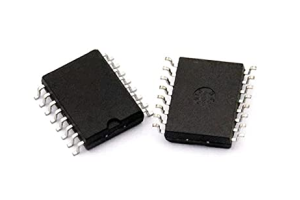
How to Integrate the PCF8574 in Microcontroller Designs?
on November 10th
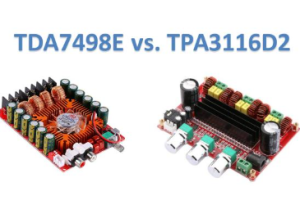
TDA7498E vs. TPA3116D2: Which Amplifier Stands Out?
on November 8th
Popular Posts
-

What is GND in the circuit?
on January 1th 3109
-

RJ-45 Connector Guide: RJ-45 Connector Color Codes, Wiring Schemes, R-J45 Applications, RJ-45 Datasheets
on January 1th 2677
-

Understanding Power Supply Voltages in Electronics VCC, VDD, VEE, VSS, and GND
on November 15th 2214
-

Fiber Connector Types: SC Vs LC And LC Vs MTP
on January 1th 2183
-

Comparison Between DB9 and RS232
on January 1th 1802
-

What Is An LR44 Battery?
Electricity, that ubiquitous force, quietly permeates every aspect of our daily lives, from trivial gadgets to life-threatening medical equipment, it plays a silent role. However, truly grasping this energy, especially how to store and efficiently output it, is no easy task. It is against this background that this article will focus on a type of coin cell battery that may seem insignificant on the...on January 1th 1775
-

Understanding the Fundamentals:Inductance Resistance, andCapacitance
In the intricate dance of electrical engineering, a trio of fundamental elements takes center stage: inductance, resistance, and capacitance. Each bears unique traits that dictate the dynamic rhythms of electronic circuits. Here, we embark on a journey to decipher the complexities of these components, to uncover their distinct roles and practical uses within the vast electrical orchestra. Inductan...on January 1th 1729
-

CR2430 Battery Comprehensive Guide: Specifications, Applications and Comparison to CR2032 Batteries
What is CR2430 battery ?Benefits of CR2430 BatteriesNormCR2430 Battery ApplicationsCR2430 EquivalentCR2430 VS CR2032Battery CR2430 SizeWhat to look for when buying the CR2430 and equivalentsData Sheet PDFFrequently Asked Questions Batteries are the heart of small electronic devices. Among the many types available, coin cells play a crucial role, commonly found in calculators, remote controls, and ...on January 1th 1677
-

What Is RF and Why Do We Use It?
Radio Frequency (RF) technology is a key part of modern wireless communication, enabling data transmission over long distances without physical connections. This article delves into the basics of RF, explaining how electromagnetic radiation (EMR) makes RF communication possible. We will explore the principles of EMR, the creation and control of RF signals, and their wide-ranging uses. The article ...on January 1th 1670
-

Comprehensive guide to hFE in transistors
Transistors are crucial components in modern electronic devices, enabling signal amplification and control. This article delves into the knowledge surrounding hFE, including how to select a transistor's hFE value, how to find hFE, and the gain of different types of transistors. Through our exploration of hFE, we gain a deeper understanding of how transistors work and their role in electronic circu...on November 15th 1633




